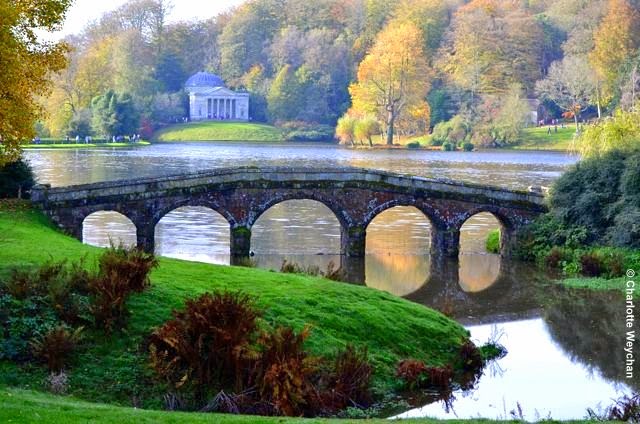On arrival at Stourhead, you would be forgiven for thinking that this magnificent landscape garden was created by one of the two men who changed the face of landscape design in Britain in the 18thcentury – William Kent or ‘Capability’ Brown – but it was actually created by a man who belonged to a banking empire, Henry Hoare, with the help of his architect, Henry Flitcroft. And whilst the latter Henry was a colleague of William Kent, he was by no means an established landscape garden designer when work began on the gardens here.
![]() |
| The lake at Stourhead, created by Henry Hoare and Henry Flitcroft in the mid-18th century |
Henry Hoare (who is often referred to a Henry 'the magnificent') had travelled extensively in Europe before settling at the Palladian house, designed by Colen Campbell and built for his father in about 1720. He was well acquainted with both foreign architecture and many of the great European landscape painters. On his return to England, his intention was to create a formidable panorama in the grounds of the country house he had inherited and when work began in the mid 18th century he set about creating the huge lake that forms the centrepiece of the grounds at Stourhead today.
The lake was created by damming the River Stour and whilst work continued on the buildings in the garden, which include the pillared Temple of Flora (1744), the Temple of Apollo and The Pantheon, Henry was also busy planting the trees that make this landscape so spectacular and creating the pathways that wind through both the wooded areas and alongside the water.
It was his grandson, Richard Colt Hoare, who introduced many new plant species to the estate in the first half of the 19th century. His legacy includes tulip trees, Indian bean trees and swamp cypresses, as well as copper beaches and many of the rhododendrons that provide spectacular spring colour in the garden. Subsequent generations of the Hoare family added to the planting during their time at the property and when Sir Henry Hoare eventually gave the estate to the National Trust in 1946, the garden, which was already recognised as one of the finest landscapes in Britain, was well established and renowned for its specimen trees.






